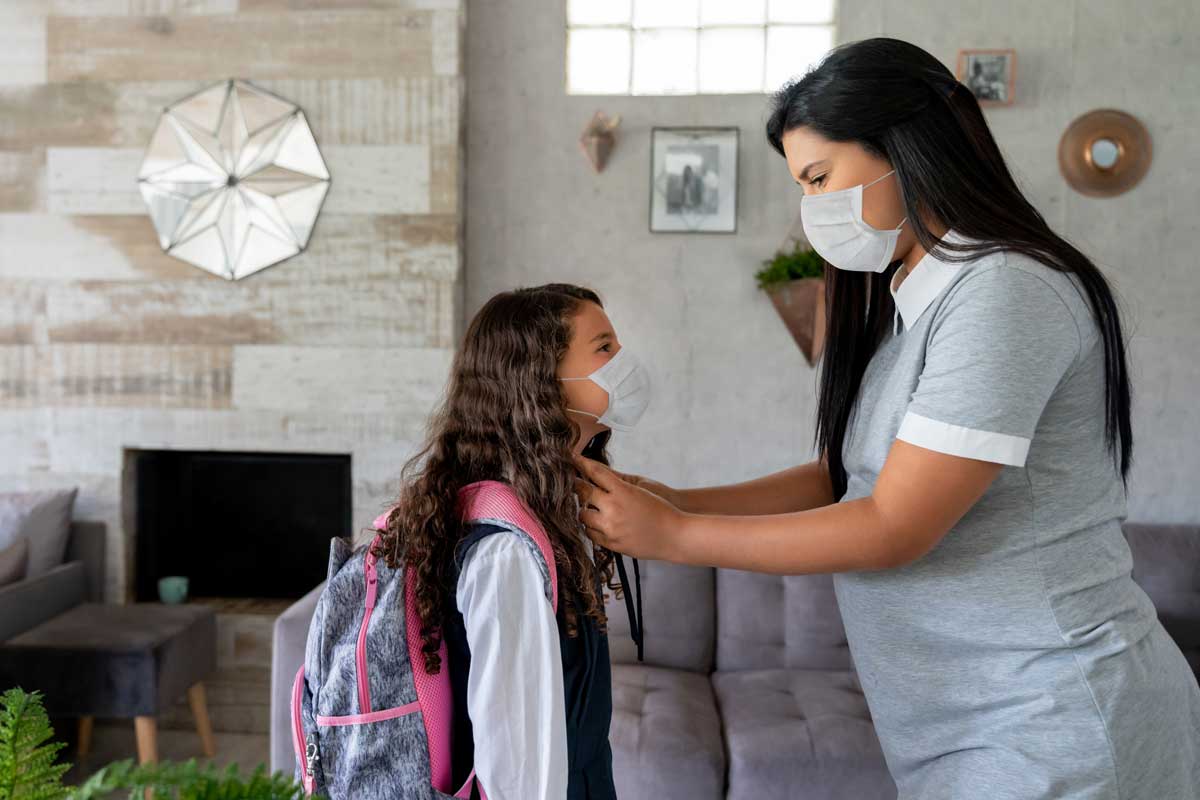A year that has become known for its uncertainty stands to get even more complicated as many kids get ready to go back to school. Dr. Timothy Lishnak, who sees school-aged children and their parents at UConn Health’s family medicine practice in Canton, shares his perspective on the start of the school year.
What are you witnessing with your patients in terms of the comfort level of families sending their kids back to the classroom?
Comfort varies widely among parents. Many are “ready” for their kids to go back based on most kids being out of school and home since March. They have also gotten more comfortable with living with COVID and steps they can take to reduce their risks. Another common refrain pertaining to their willingness to get the kids back in class is how difficult online learning has been, particularly for the younger students.
What are some common discussions you are having, or are preparing to have, with your patients and families about back-to-school?

Parents (anyone for that matter) have to do what they feel is best and are most comfortable with. For some this will mean a return to school, for others this will mean remote learning. There are pros and cons with each.
Pros of having the kids in school include the socialization that occurs in this setting which is important developmentally along with increased resources, particularly for those children that qualify for additional services, such as those with an IEP (individualized education program).
Right now, with COVID, there is an exposure risk when one goes out in public but that risk can be lowered (but not brought to zero) with face covering, hand washing, and distancing (as able). The good news is that our rates in Connecticut right now are low so the chance of being exposed to a person who is positive (has an active case) is low, which, when combined with the other measures, further lowers the risk. But this risk will remain until an effective vaccine is introduced and enough people have been vaccinated, and even then the risk will not be zero as a vaccine will be unlikely to be 100% effective.
Regardless of whether kids will be going to school or learning online they should be getting comfortable with masking, hand washing, and distancing.
Given the challenge of keeping 6-feet away from everyone in a school building, what steps should students be prepared to take to stay safe?
Acknowledging that it can be hard to maintain distance at times, this is where face covering, and placing an emphasis on that, becomes important.
For those who’ve started to expand their bubble of contact (family members outside the home, certain friends), what are you telling them about possibly rethinking those interactions once our kids are back to school and exposed to the “general population”?
They have to acknowledge that once kids are back in school the exposure risk goes up, which means that the risk of kids transmitting the virus to others goes up as well.
What should we make sure is in the kids’ backpacks this year?
Healthy lunches should be in their backpacks as able along with a filled water bottle, plus hand sanitizer and an extra mask since kids lose things.
What do you have to say about school buses, extracurricular activities, etc.?
Hopefully school buses will keep windows open to promote ventilation/fresh air. Hand wash after riding the bus. Regarding extra-curriculars it would depend on the proximity, most sports played by children will entail close proximity and will likely not entail use of masks, hence an increase in potential risk, parents need to weigh this as they consider whether to allow their kids to participate in recreational soccer, etc.
How might the conventional wisdom vary by age (i.e. kindergarteners vs. high school students)?
Elemental students likely stand to benefit most from in person learning whereas older, high school students are more capable with remote learning. Also, some studies suggest those under 12 are less affected by COVID (if infected) and less likely to spread it.
Explain the importance of listening to our bodies and honestly reporting symptoms.
Schools will be symptom screening, parents should do the same and teach their kids to be truthful and let them know how they are feeling both physically and mentally.
How do you foresee flu season possibly compounding things this year?
As flu can present with similar symptoms to COVID this illustrates needs for adequate, and timely, testing plus emphasis on being vaccinated against influenza.
What else would you say to parents?
Don’t ignore immunizations. Many kids are falling behind on immunizations during COVID, which puts them at higher risk of other diseases. Check in with students in terms of how they’re coping mentally during the pandemic. (That applies to all of us).



